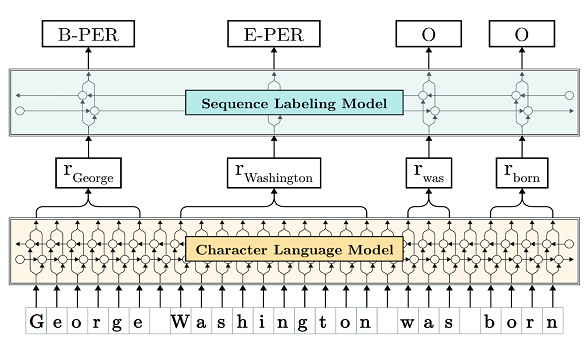
The Battle of The NLP Libraries: Flair vs Spacy
Natural Language Processing (NLP) has revolutionized the way we interact with technology that enables machines to understand and process human language. Two powerful NLP libraries, Flair and Spacy, have emerged as major contenders in this domain. In this comprehensive comparison, we will explore the strengths, weaknesses, and use cases of both Flair and Spacy to help you make an informed choice for your NLP projects.
Before delving into the battle first understand the basic things about NLP libraries: Flair and Spacy.
What is Flair in NLP?
The Open-source NLP library Flair was developed by Zalando Research. It gained popularity for its state-of-the-art contextual string embeddings, which capture word meanings based on their surrounding text. Flair aims to provide seamless integration of Word and document embeddings and make it easy to obtain insightful representations of text data.
Flair NLP Library architecture is based on the Bidirectional LSTM (Long Short-Term Memory) network, which enables it to learn from both past and future words in a sentence. Additionally, Flair supports character embeddings, which can be beneficial in scenarios where words are misspelled or in morphologically rich languages.

Flair has introduced a range of pre-trained models designed for various Natural Language Processing tasks.
-
1. Name-Entity Recognition (NER)
2. Text Classification
3. Parts-of-Speech Tagging (PoS)
4. Training Custom Models
Flair has supplied two pre-trained Named Entity Recognition (NER) models that share an identical architecture: a bi-LSTM on top of a word embedding layer. However, the NER datasets used to train each classifier are distinct from each other.
What is Spacy in NLP Library?
Spacy, on the other hand, is a powerful and efficient NLP library known for its speed and accuracy. It is designed to handle large-scale text processing which makes it an excellent choice for production environments. Its extensive linguistic data and pre-trained models enable it to handle various tasks such as part-of-speech tagging, named entity recognition, and dependency parsing.

SpaCy utilizes a straightforward classifier for its Named Entity Recognition (NER) model. This classifier is a shallow feedforward neural network with a single hidden layer, and its effectiveness is enhanced through intelligent feature engineering.
Before input features are passed to the classifier, weighted bloom embedding layers are employed to combine neighboring features. As a result, each word is assigned a distinctive representation for every unique context it appears in.
Which is the better NLP library: Flair or SpaCy?
Also Read: Polars: The New Kid On The Block That’s Challenging Pandas
Both Flair and SpaCy are powerful NLP libraries with distinct features and strengths which make them viable options for different scenarios. Flair and Spacy are open-source NLP libraries designed to process and analyze text data efficiently. While they share some similarities, they have distinct features and applications.
| Feature | Flair | Spacy |
|---|---|---|
| Speed | Faster | Slower |
| Accuracy | More accurate | Less accurate |
| Feature | NER, POS, sentiment analysis, contextual information | NER, POS, sentiment analysis, and many other tasks |
| Customizability | Less customizable | More customizable |
| Community Support | Smaller community | Larger community |
| Ease of Use | Easier to get started with | More complex, but larger community of users and developers |
| Performance | Slower, but optimized for certain use cases | Faster |
| Use Cases | NER with contextual information, simple API, and pre-trained models | Speed, comprehensive features, a large community of users and developers |
| Model Architecture | BiLSTMs, CNNs, Transformer models | CRF model |
Advantages and Disadvantages of Flair NLP Library
Advantages of Flair NLP Library
Flair is an open-source library specifically designed to achieve state-of-the-art performance in Named Entity Recognition (NER).
Support for multiple languages and actively looking to expand its language support by constantly adding new ones.
Comprises of popular and state-of-the-art word embeddings
The developers are additionally currently working on "Frame Detection" using flair
Great Modular Design
Disadvantages of Flair NLP Library
Comparatively slower than the Spacy NLP library.
Fairly new and a lot of work still needs to be done to improve it
Also Read: How Natural Language Processing Boost Your Business Efficiency and Growth
Advantages and Disadvantages of Spacy NLP Library
Advantages of Spacy NLP Library
Well-engineered and documented
Known as the fasted NLP framework.
Easy to learn and use because it has one single highly optimized tool for each task.
Provides built-in word vectors.
Active support and ongoing development
Disadvantages of Spacy NLP Library
Limited Accuracy
Supports only 7 languages and “multi-language models”
Wrapping Up
If you require powerful contextual embeddings and are focusing on specific NLP tasks, Flair could be a good choice. On the other hand, if you require a more general-purpose NLP library with production-ready capabilities, SpaCy might be a better fit. In some cases, combining both libraries might also be beneficial to leverage their respective strengths. Your choice between Flair and SpaCy will depend on your project requirements and preferences.
Looking for a Python development agency to turn your dream project into reality? CodeTrade is a reputable custom software development company in India. We specialize in delivering top-notch services that adhere to international standards. Hire Dedicated Developers from CodeTrade and bring your vision to life!
Happy Coding…!